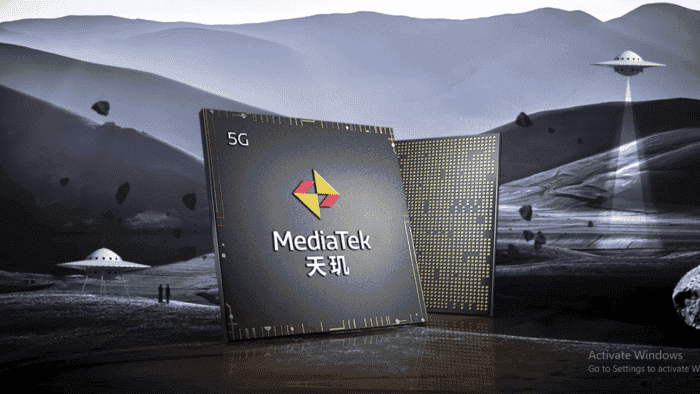Taiwanese chipmaker, MediaTek has been around for a very long time. Right from the era of feature phones which once ruled the mobile phone industry, MediaTek has been in the picture. Now, we are in the smartphone era and MediaTek is leading the market. Recent reports show that in the second quarter of this year, MediaTek’s share in the global smartphone AP/SoC processor market hit 43%, a new high. Furthermore, MediaTek has been the top chipmaker for four consecutive quarters.
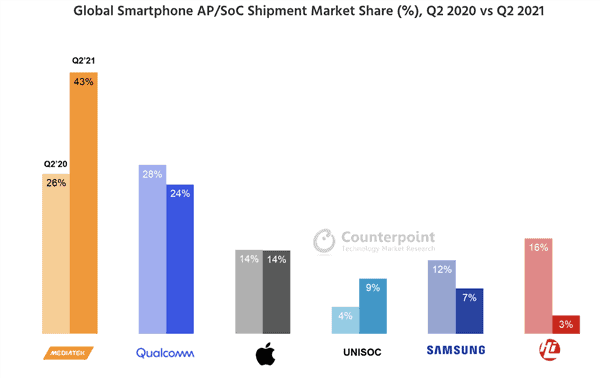
Whether it is its Dimensity processor, 5G, or subdivision technologies such as AI, games, camera, etc., the company is in a leading position in the industry. So, what is so good about MediaTek’s technology? Let’s take a look at MediaTek’s latest technological achievements and development trends based on the Dimensity 5G mobile platform in multiple fields. This includes a new generation of 5G baseband supporting 3GPP R16 standard, high-efficiency AI applications, mobile games, and Dimensity 5G open architecture. These are the top four areas that keep MediaTek ahead of the competition
1. 5G Baseband
MediaTek did not achieve its current 5G status overnight, it has been developing this technology. Likewise, the 5G industry has been evolving for years. Despite the large-scale commercialization of this network, there is still a need for improvements.
In July last year, the second version of the 3GPP 5G standard specification Release 16 (5G R16) was officially released. This provides stronger carrier aggregation capabilities, lower communication power consumption, better experience in high-speed rail scenarios, and a more stable mobile network connection.
MediaTek’s new-generation M80 5G baseband fully supports the 3GPP 5G R16 standard. It not only supports 5G key technologies such as uplink and downlink multi-carrier aggregation and super uplink but also upgrades UltraSave power-saving technology and dual-card technology.
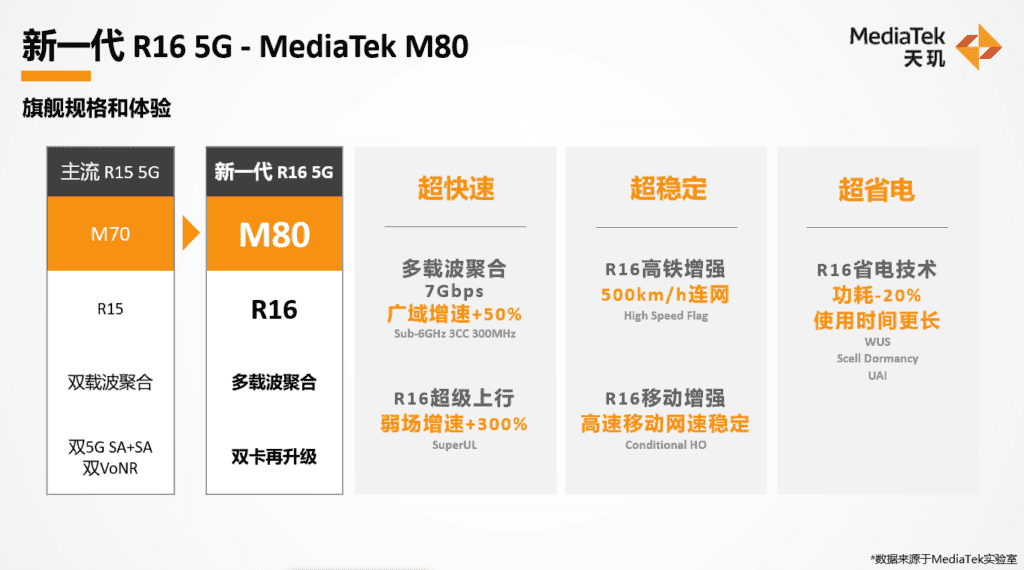
Specifically, the MediaTek M80 5G baseband can achieve 7Gbps extremely fast downlink with multi-carrier aggregation, with a wide-area growth rate of more than 50%. Its super uplink can speed up by more than 300% in weak signal scenarios, and the enhanced high-speed rail mode can even exceed 500 kilometers. The connection is very stable and the power-saving technology reduces power consumption by 20%.
Unlike other 5G baseband solutions, the iterative transition nature is obvious. We have the plug-in first and then integration. There is the NSA single-mode first and NSA/SA dual-mode, 5G+4G dual card first and then 5G+5G dual card. This means that the earlier products will quickly go into oblivion. However, MediaTek’s earlier solutions support the latest standards. Even the previous generation, M70 5G baseband, with advanced features such as integration, dual-carrier aggregation, 5G dual card, NSA/SA dual mode, dual VoNR, and so on, can still fully meet the mainstream needs.
2. AI Applications
AI is an indispensable element in this era, especially on mobile platforms. The application of AI in multimedia is mainstream. MediaTek deployed AI early and the Dimensity series processors directly integrate APU AI units. Through flexible use of integer precision and floating-point precision operations, high energy efficiency realizes AI face detection engine, and AI high dynamic range images, including AI noise reduction. Other applications include AI camera and video applications such as depth of field, AI shutter, and AI white balance. There is also AI object tracking, AI multi-person blur, and AI streaming media image quality enhancement.
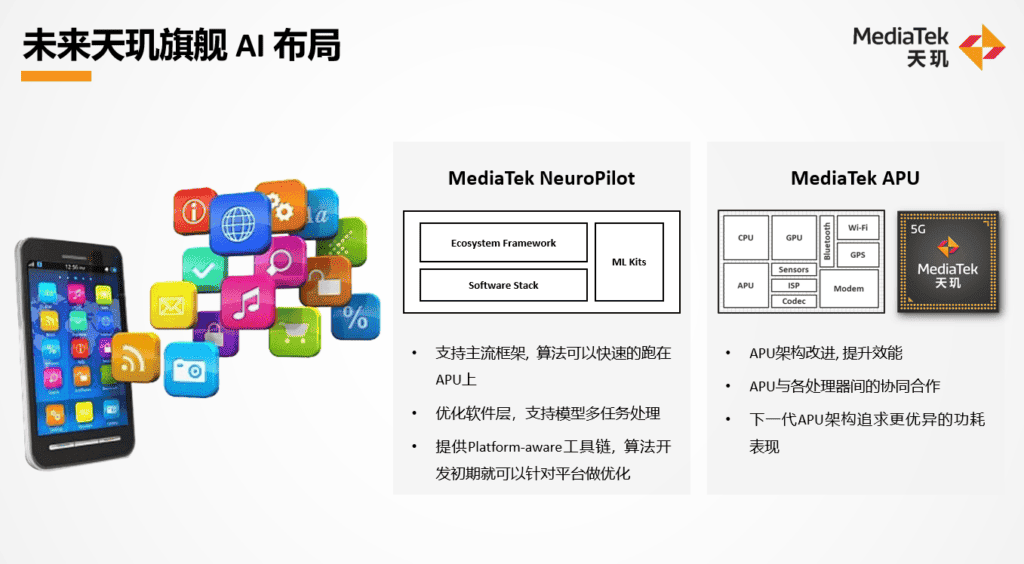
MediaTek also revealed that the next-generation APU architecture will have better performance and wider applications. It will also specifically pursue better power consumption performance. MediaTek emphasized that in high-frequency application scenarios such as photography, video, streaming media, and games, compared to pure peak AI computing power, effective AI performance per watt is a key indicator to ensure and improve users’ long-term stable experience.
In terms of software, MediaTek has the NeuroPilot SDK, which supports mainstream frameworks and optimizes the software layer. This can help AI developers easily implement cross-platform and cross-product line deployment.
3. Game
With the migration of game technology from end-to-end games to mobile games, the performance of mobile platforms and game content must also be continuously upgraded to bring a better gaming experience. MediaTek recently launched a mobile ray tracing SDK solution based on the Vulkan extension and cooperated with ARM and Tencent Games to achieve the first demonstration of mobile real-time ray tracing technology. This opens a new chapter in mobile game picture quality.
The solution provides a way to create core ray tracing functions, including path tracing, screen-space ray tracing shadows, multiple reflections, and arbitrary surface reflections. It is also compatible with industry graphics standards defined by Khronos. This allows PC games to easily migrate to mobile platforms.
Of course, one cannot fail to mention the MediaTek HyperEngine game engine. Since its birth in 2019, it has evolved to version 3.0. It comes with four major sectors including a smart scheduling engine, network engine, control engine, and image quality engine. It supports continuous call 3.0, high-speed rail mode/congestion mode, super hotspot, and temperature control stable frame 1.0. Furthermore, it has a headphone delay solution, high brush power-saving solution, Wi-Fi 6 power-saving solution, and smart charging solution. Other features include a multi-touch low latency solution, App Game PQ 2.0, and a series of practical technologies. All these greatly enhance the gaming experience. MediaTek also disclosed that it will launch a new generation of HyperEngine 5.0 in 2022 with more new features.
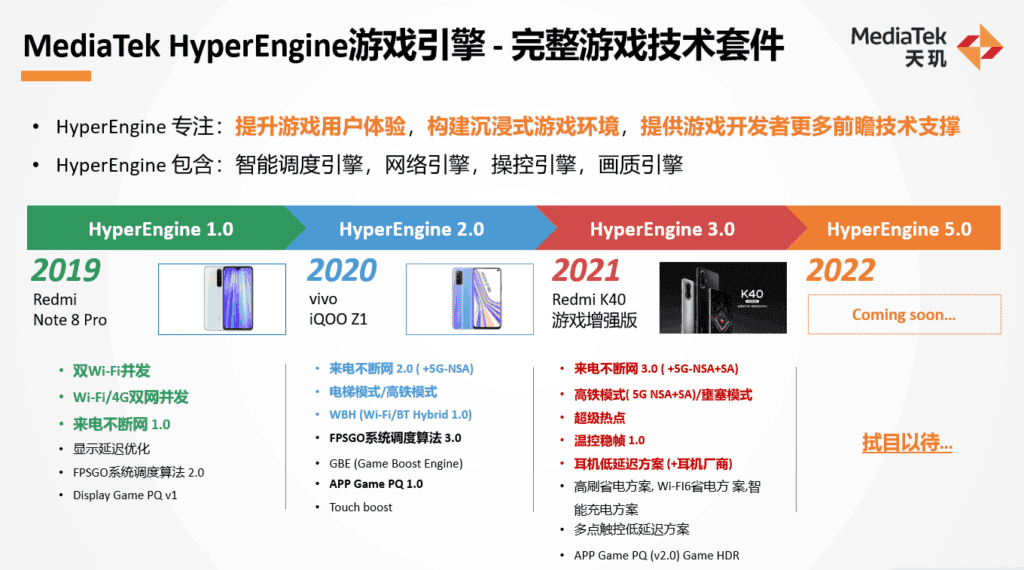
4. Dimensity 5G open architecture
MediaTek’s Dimensity 5G open architecture provides open resources and terminal manufacturers can customize key features. These features include multimedia experience, AI mixed-precision optimization, camera processing engine, etc. The framework was just proposed in the middle of this year, and it will be quickly implemented globally in the second half of the year.
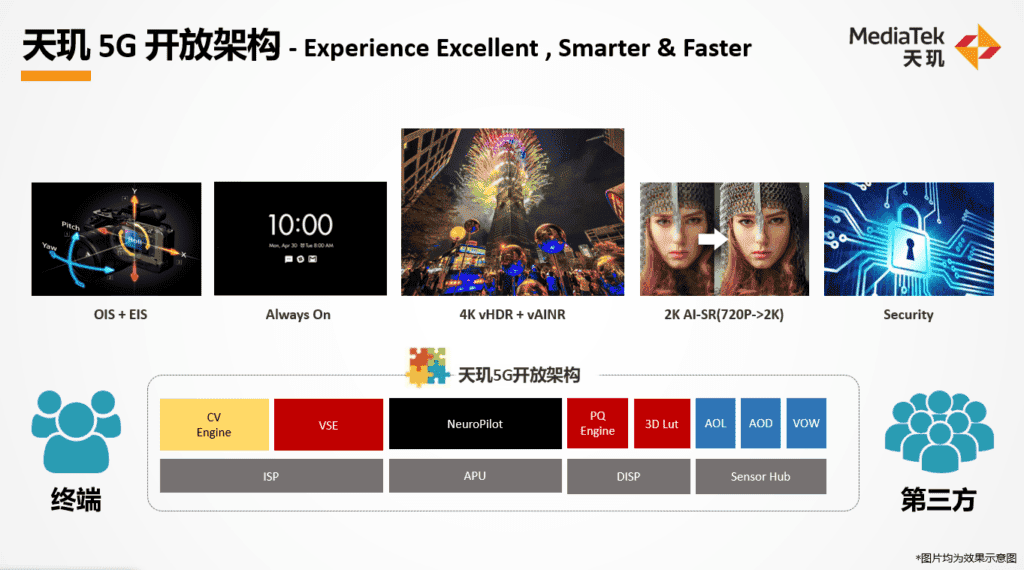
For example, based on the Dimensity 1200 mobile platform, MediaTek has in-depth cooperation with OnePlus, Xiaomi, Vivo, Realme, and other terminal manufacturers. The OnePlus Nord 2 uses the Dimensity 1200-AI. This is a custom chip developed through the Dimensity 5G open architecture.
Other custom platforms such as Dimensity 1200-Ultra (Xiaomi Mi 11T) and Dimensity 1200-Vivo (Vivo X70/X70 Pro) fully unleash their potential. They create a different experience and the customization deepens their performance. This becomes an important selling point for these flagship smartphones. In the future, there will be more similar cooperations, and these custom solutions will have similar suffixes.
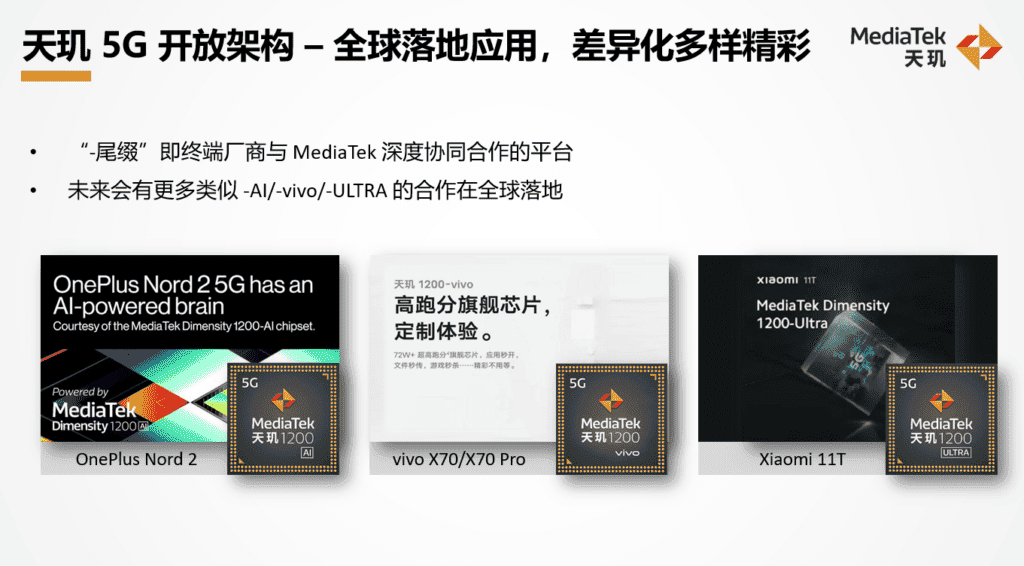
Summary
From daily applications to more diverse advanced functions, the outstanding performance of smartphones in terms of high performance, low power consumption, communications, photography, multimedia, games, etc., all benefit from the continuous technological upgrading and innovation of the mobile platform. As the world’s leading 5G mobile platform, MediaTek Dimensity has demonstrated innovation and leadership in 5G, AI, and games, and has promoted the progress and transformation of the entire mobile industry.
Follow Gizchina.com on Google News for news and updates in the technology sector.

